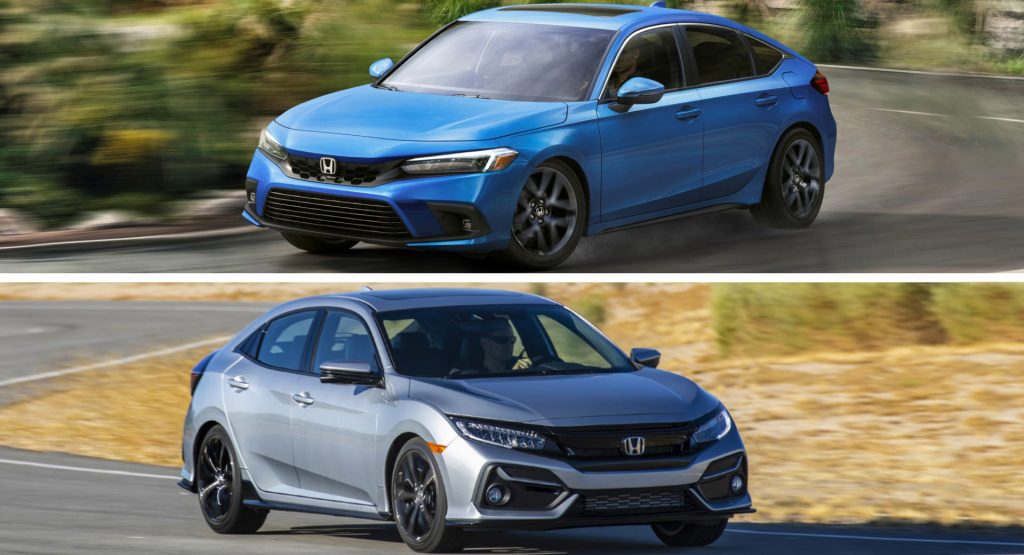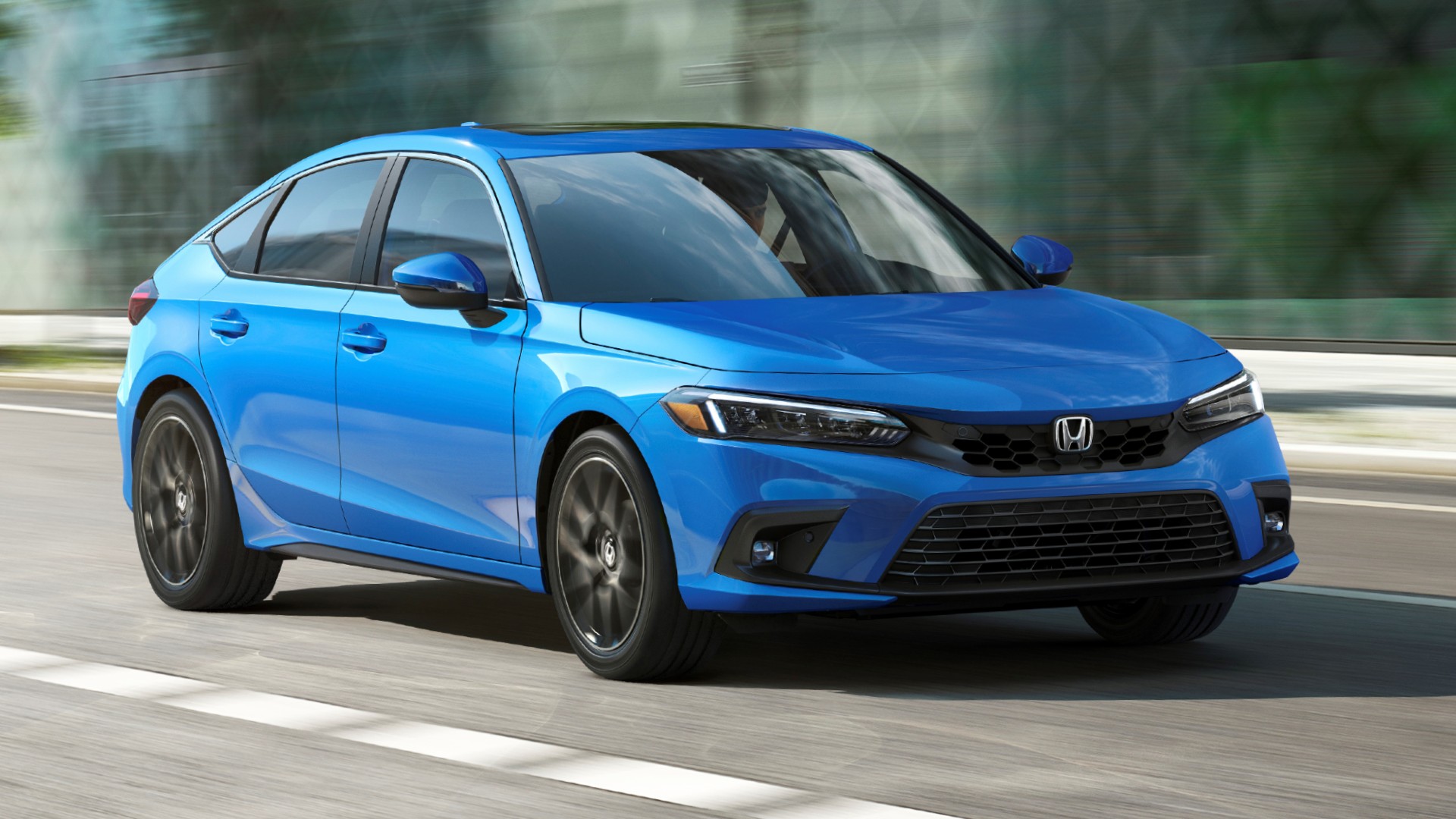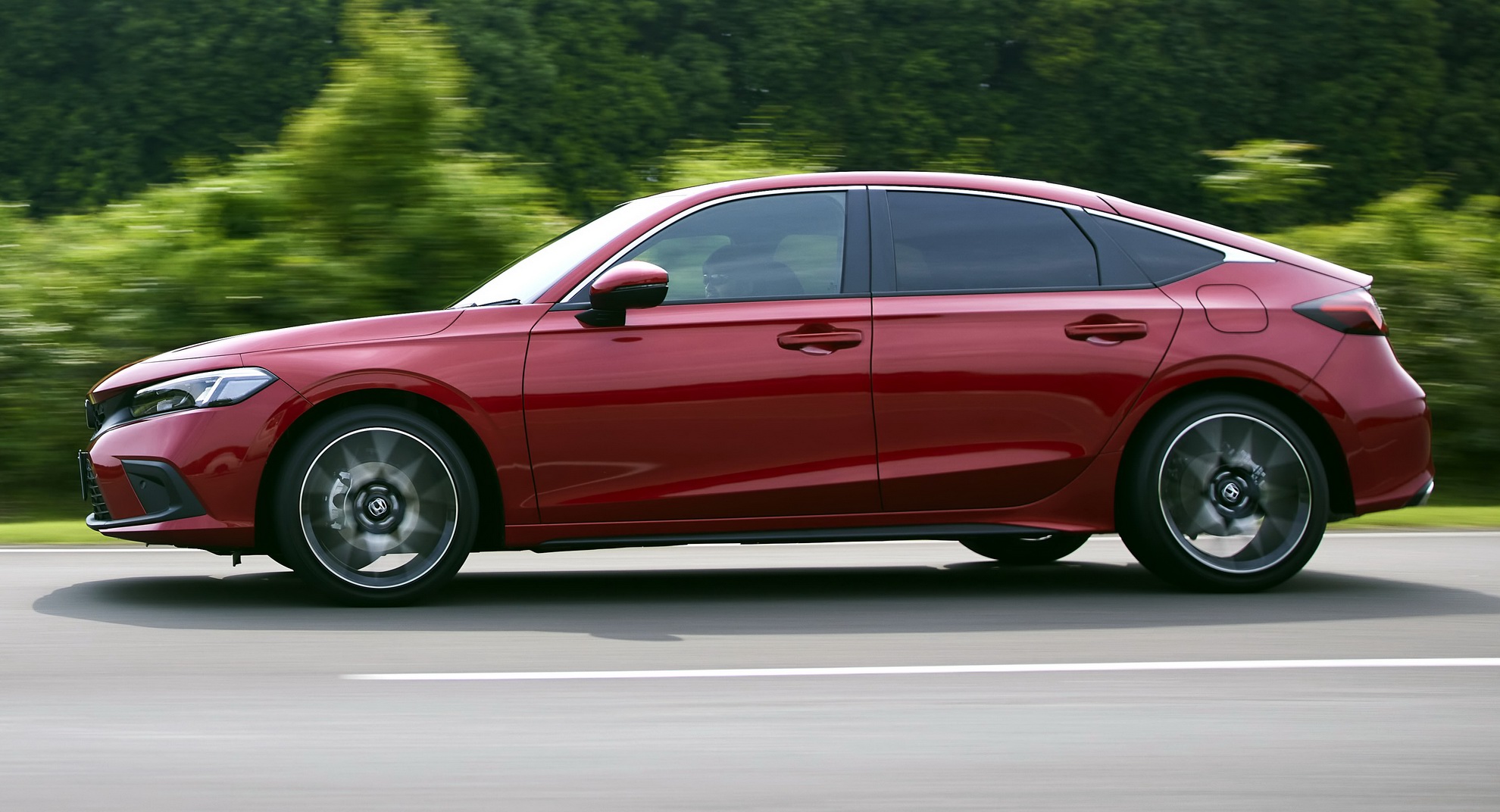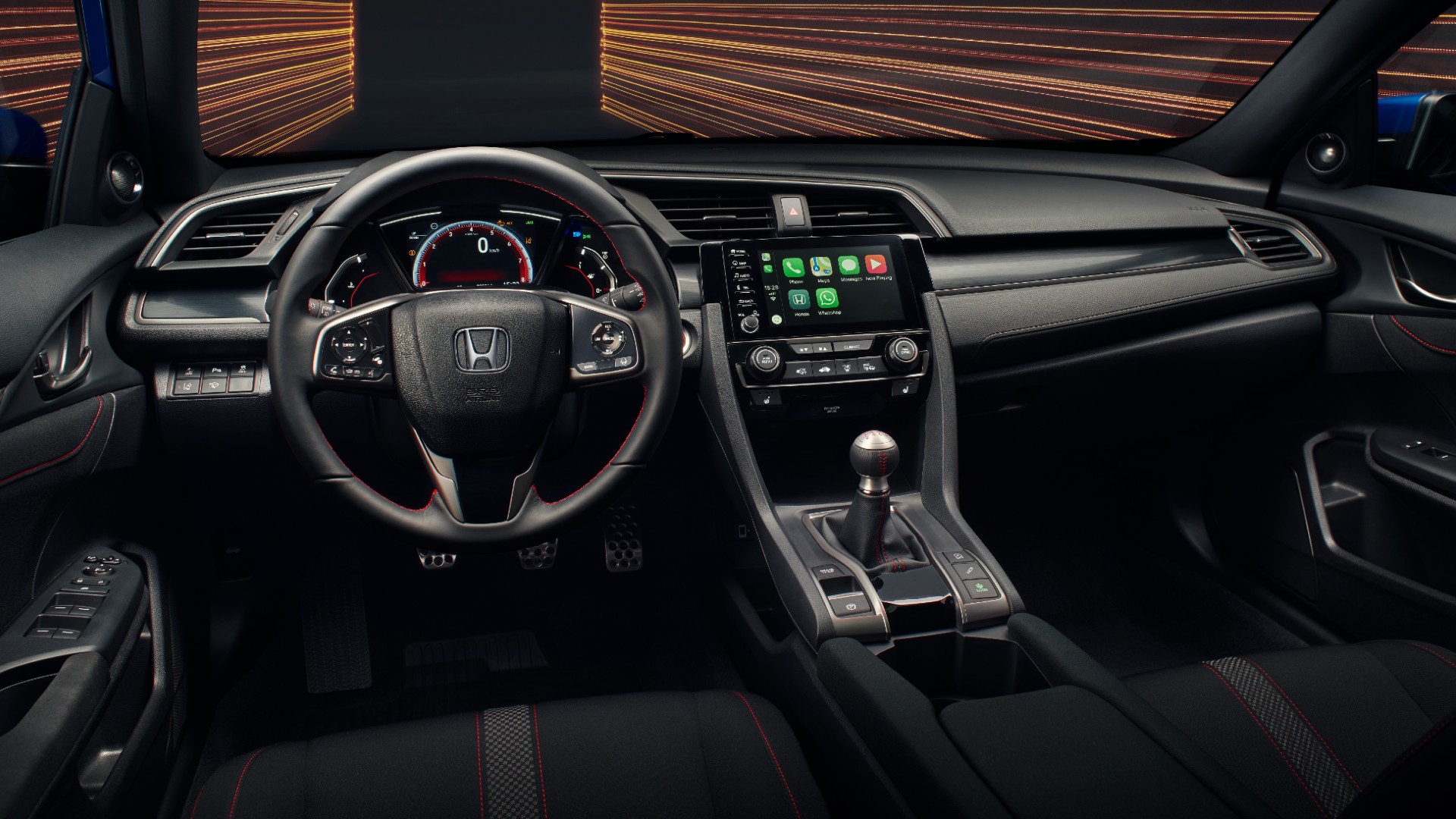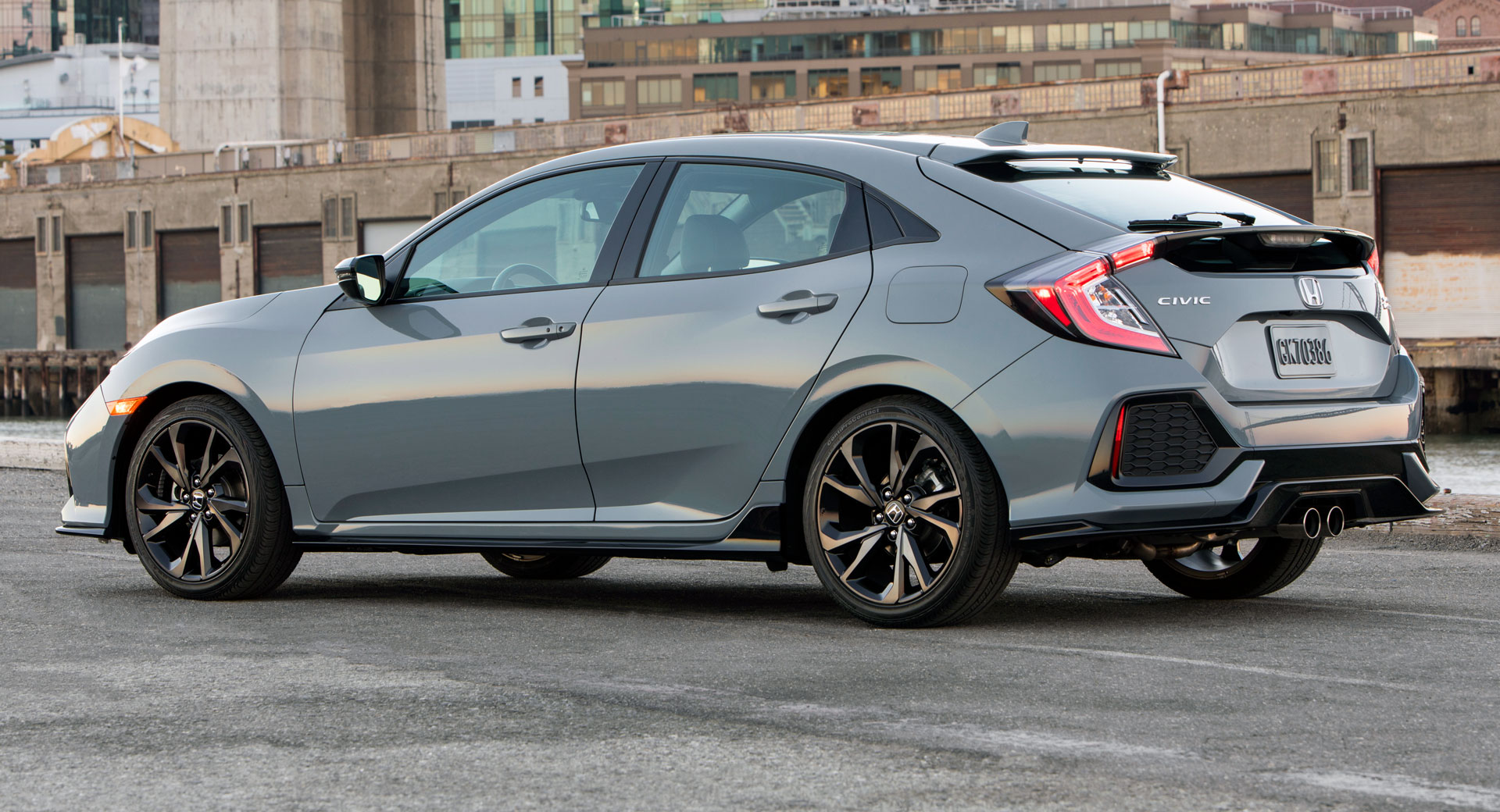The 2022 Honda Civic Hatchback made its debut last might just two months after the Sedan, bringing five doors, more sportiness, and added practicality to the mix.
Honda states that the 11th generation Civic has been improved in terms of driving dynamics, ride quality, efficiency, technology, and interior space – we’ll add a more mature, less boy-racer styling for the latest model. But how does the new model’s design stack up against its predecessor? Looks may be subjective however a side-by-side visual comparison is always helpful to make up your mind.
Read Also: 2022 Honda Civic Hatchback Combines Practicality With Turbo Power And A Six-Speed Manual
Starting with the front end, the 2022 Civic is less aggressive than the 2021 Civic to an extent that some people will refer to it as dull. However, it does looks wider thanks to the thinner and horizontally arranged LED lights.
The grille between them is also skinnier, with the middle part protruding to make the nose seem longer. The side intakes on the front bumper are considerably smaller, with less plastic surrounding the fog lights. On the other hand, the central and fully functional intake has grown, with the help of the middle part of the front splitter that is also painted in black.
Read Also: 2022 Honda Civic Sedan First Reviews Are In, What Are They Saying?
Moving over to the profile, the Civic retains the sportsback silhouette and low height of its predecessor, but with a few changes in the proportions making it appear larger and more sophisticated. The window line follows the pattern also seen on the Accord but with less drama this time. The hood is longer, the A-pillars have moved back by 1.96 inches the wheelbase has gained 1.4-inches, the mirrors sit on the doors, and the beltline is lower and more horizontal than before making room for a larger greenhouse.
What is interesting is that Honda chose to make the body less muscular, giving reduced emphasis on the wheel arches and making the dynamic lines softer. This might go against the current trend, but it also makes the car more appealing to a wider audience which is what you expect from a global mainstream best-seller. As a result, the new Civic looks a lot more conservative than its predecessor but – judging from VW Group’s similar better-safe-than-sorry design evolution strategy – it may very well age better.
A similar tactic was followed for the design of the tail making the new generation a lot less confusing to look at. The roofline is still heavily inclined towards the back but the lines are cleaner and more balanced. The shut lines of the rear hatch are not floating around like in the old generation but they are beautifully integrated with the chrome decorative strip of the side windowline.
The spoiler is better integrated with the design and doesn’t cut the rear windshield in half as it used to do. The taillights are also slimmer and wider, while a thin red strip connects them as the current design trend suggests. The design of the rear bumper might appear dull to a certain audience but it is a huge step up from the previous generation’s huge fake vents and angular boy-racer fins. The chrome decorative finish on the dual exhaust pipes (the actual tips are a lot smaller) and the diffuser are giving it a touch of sportiness, reserving any styling exaggerations for the flagship Type R.
Read Also: 2022 Honda Civic Sedan Fully Detailed, Gets Buttoned-Down Design, Promises More Premium Feel
Another good thing with the new generation Hatchback is the greater differentiation from the Sedan when you compare it with the previous versions that had very similar taillights.
Inside, the dashboard has been simplified with a retro-inspired full-width metal mesh integrating the climate vents. While for the most part decorative and probably difficult to keep clean, this design feature brings a greater emphasis on the width of the interior and splits the dashboard in two. Instead of being integrated with the sci-fi cockpit-like inclined center console of the previous generation, the 7″ or 9″ infotainment screen now sits higher on the dashboard – a common sight these days. Thankfully Honda retained physical knobs for the climate controls and the volume which came back since the facelift of the previous gen, so brownie points for that.
The central tunnel also sits higher in the new Civic in order to appear more premium. Honda states the driver has greater visibility and the rear passengers enjoy 1.4 inches more legroom and the same amount of headroom as the previous generation.
On the practicality side, while we don’t have specs for the cargo space we know that the lower part of the loading area is 1.6 inches wider. Rear seatbacks fold with a 60/40 split to make more room for stuff when needed. The boot now stands at 24.5 cubic feet slightly reduced from the previous model’s 25.7 cubic feet (22.6 cubic feet for the Sport / Sport Touring variants), but still a lot more than the new sedan’s 15.1 cubic feet (Touring has 14.7 cubic feet).
So what is your opinion on the visual comparison of the Honda Civic’s 10th and 11th generation? Does the more conservative and premium-looking new model fit your taste or do you prefer the old model’s hot hatch approach? Join the conversation in the comments section below to tell us more.








